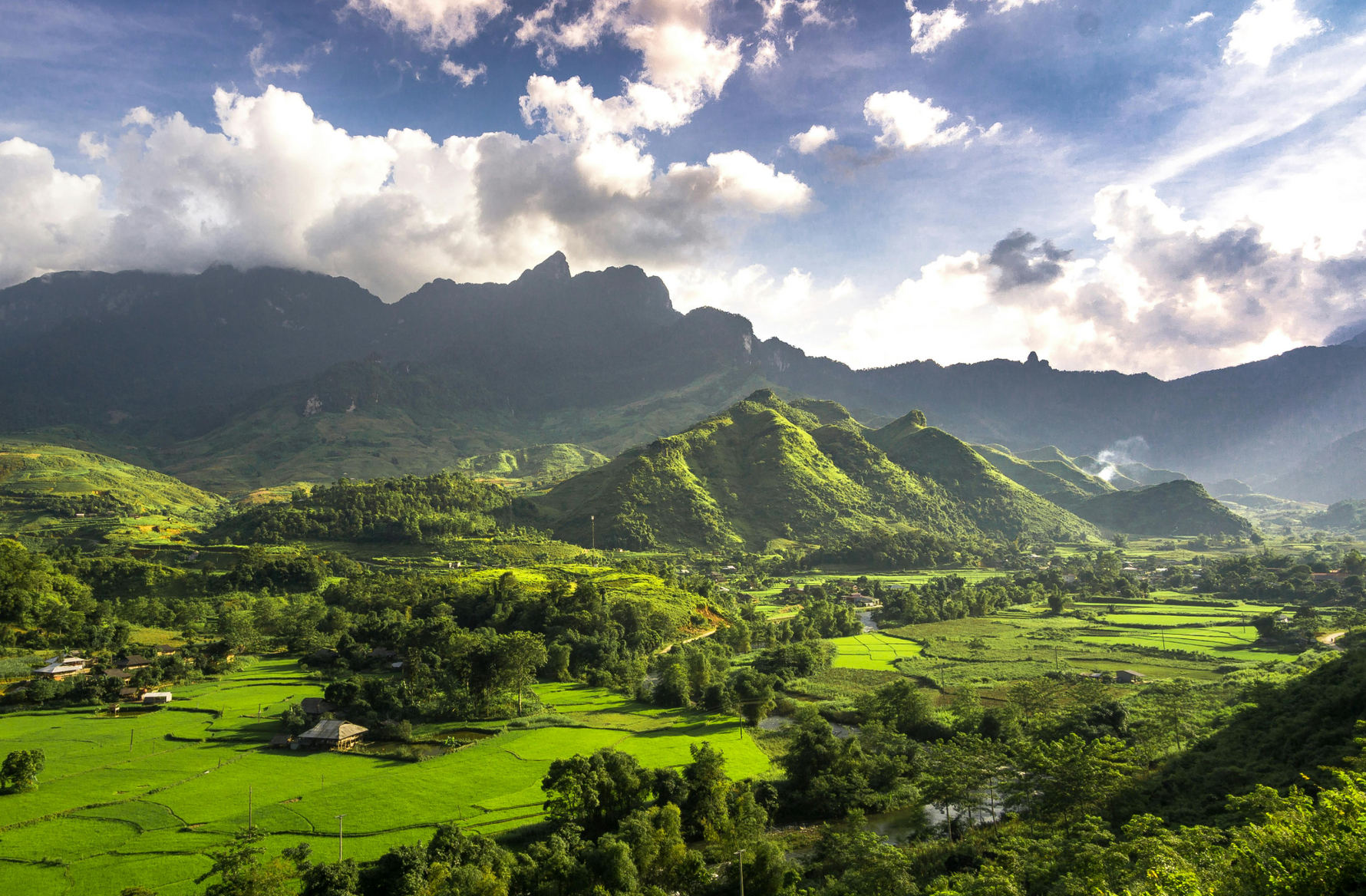The appeal of Vietnam mountains lies not only in their arresting natural beauty but also in the cultural encounters they enable. Here in the highlands, ethnic minority communities have lived for centuries, shaping the land with their terraced fields and preserving time-honored traditions. The gentle hum of flutes at a village gathering, the hand-embroidered patterns on colorful textiles, and the aroma of traditional dishes being prepared around a wood-burning stove are all part of an immersive experience that connects travelers to the country’s rich heritage.
For those seeking an adventurous escape, the mountainous regions promise unforgettable treks, winding passes that offer sweeping panoramas, and a cooler climate that contrasts sharply with Vietnam’s tropical lowlands. Adventurers might find themselves navigating winding trails through bamboo forests, crossing streams over rickety bridges, or summiting peaks that unveil seemingly endless layers of ridges and valleys. Whether you are an avid hiker, a cultural enthusiast, or simply in search of solace in nature’s embrace, these upland enclaves will remind you that Vietnam’s diversity runs deeper—and soars higher—than many travelers ever realize.

Where Towering Peaks Meet Endless Horizons
Among Vietnam’s mountain regions, the north stands out as a realm of dramatic contours and hidden surprises. Perhaps the most renowned destination is Sa Pa, a picturesque town wrapped in rolling hills and breathtaking terraces. The town has grown in popularity over recent years, but a journey just a few kilometers beyond the main streets transports visitors into secluded hamlets where life moves at a gentler pace. The area’s cooler climate and regular mists give Sa Pa an ethereal quality, especially at dawn, when terraced rice fields gleam under the first rays of the sun. Farther north, the province of Hà Giang presents a wilder face of Vietnam mountains, with winding roads that cling to limestone cliffs, revealing panoramic views of sheer rock walls and deep gorges.In the country’s Central Highlands, a different sort of majesty appears. Surrounded by rolling plateaus and cascading waterfalls, the region around Kon Tum, Buôn Ma Thuột, and Đà Lạt surprises travelers with pine forests and fertile coffee plantations. The ancient volcanic soils have turned the area into a lush expanse, making the highlands a significant agricultural hub. Yet the appeal here goes beyond plantation tours. Mist-laden hillsides and winding rivers sculpt a landscape that feels equally inviting for calm reflection and active exploration.
Cultures and Traditions in the High Altitudes
The mountain domains of Vietnam are more than just scenic backdrops; they are also home to a tapestry of ethnic communities, each with its own language, customs, and worldviews. In the northern provinces, visitors encounter groups like the Hmong, Dao, and Tay, whose clothing patterns reflect centuries of artistic heritage. Intricate embroidery, vibrant dyes, and delicate motifs tell stories of ancestral legends, spiritual beliefs, and family identity. Spending time in one of these communities can offer travelers a rare glimpse into rituals, musical traditions, and ceremonies that highlight a respect for the land and the spirits thought to reside within it.Further south in the Central Highlands, communities such as the Ê Đê, Gia Rai, or Bahnar have built traditions around communal houses, known for their unique architecture and social significance. Drumming ceremonies, sometimes taking place around a communal bonfire, honor spirits and ancestors, reinforcing the sense of unity among residents. Engaging with these customs in a respectful manner can open doors to genuine cultural exchange. Visitors who approach the region with humility and curiosity often discover that the mountains are not merely scenic viewpoints, but living entities in which centuries of stories and cultural values are woven into every ridge and ravine.
Planning Your Adventure among the Vietnam Mountains
A journey to Vietnam’s upland destinations requires some forethought, as infrastructure can be limited compared to more urbanized areas. However, this sense of remoteness is part of the appeal. Getting there often involves scenic drives on winding roads or memorable train rides that reveal the countryside’s transformation from low-lying fields to craggy peaks. Many travelers choose to start in major hubs like Hanoi or Ho Chi Minh City, then venture onward by bus or private car. For those aiming to see the northern peaks, an overnight train to Lào Cai followed by a short drive to Sa Pa is a classic route that has become an experience in its own right.For accommodation, travelers can choose between modest guesthouses, rustic homestays, or more upscale lodgings that still maintain a cozy, mountain-lodge ambiance. The advantage of staying in a homestay lies in its authenticity: evening chats around a wood-fired hearth, home-cooked meals of local produce, and the hum of cicadas lulling you to sleep, all set against the backdrop of silent valleys and luminous stars.
Preserving the Majesty for Future Generations
Exploring Vietnam mountains is not only about witnessing spectacular scenery; it is also an exercise in respectful and responsible travel. The highland areas, with their delicate ecosystems and precious cultural heritage, rely on sensitive engagement from visitors. Simple gestures, such as carrying reusable water bottles and minimizing plastic waste, go a long way toward preserving these areas. In some regions, local groups organize litter cleanups or community-led conservation projects aimed at safeguarding rare plant and animal species. Participating in or supporting these efforts can enrich your trip with a deeper sense of purpose.Ultimately, these far-flung upland regions represent an integral chapter of Vietnam’s overall story. While the busy commercial centers along the coast have their own charms, the mountains are where nature’s grandeur merges with timeless cultural expressions. The echo of a flute across a misty valley, the warmth of a communal meal in a wooden house, and the sight of vibrant textiles fluttering in a brisk breeze all contribute to an experience that transcends ordinary travel. By approaching these peaks with respect and curiosity, visitors can help ensure that Vietnam’s mountainous heritage remains a source of inspiration for generations to come, preserving the emotional resonance of those lofty heights and the rich tapestry of life that thrives there.


Comments